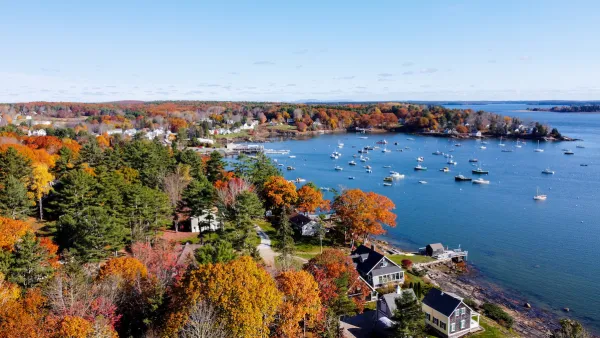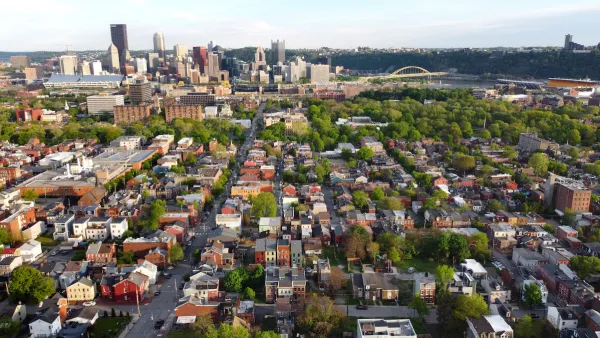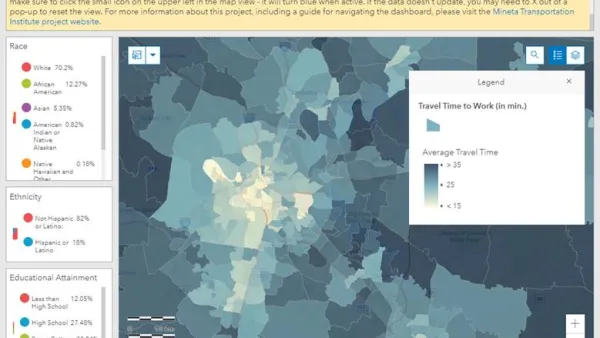Matching Obstacles and Techniques (Part one of two) Creating Smart Growth in our metropolitan areas is generally more complex than conventional auto-oriented development, more expensive, and requires more public involvement and coordination. The strong policies and regional cooperation planners desire to coordinate development have proven politically challenging. Unless planners are able to create systems that overcome these obstacles our efforts to encourage Smart Growth will be stymied. Luckily solutions are available, but they must be as nimble and resourceful as the forces they hope to counter.
Matching Obstacles and Techniques (Part one of two)
Creating Smart Growth in our metropolitan areas is generally more complex than conventional auto-oriented development, more expensive, and requires more public involvement and coordination. The strong policies and regional cooperation planners desire to coordinate development have proven politically challenging. Unless planners are able to create systems that overcome these obstacles our efforts to encourage Smart Growth will be stymied. Luckily solutions are available, but they must be as nimble and resourceful as the forces they hope to counter.
University of Maryland Professor Garrit Knaap described some of the challenges to Smart Growth in a 2006 article that contains a good synopsis of the "movement's" history. He diagnoses the problem as a lack of planning:
It is important that the public understands the consequences of sprawl and the benefits of managed urban growth. It is also important the public policies do not distort prices in favor of sprawl. But the fundamental cause of sprawl is the lack of coordinated decision making across sectors, over space, and through time. This cause cannot be addressed by changing prices or preferences; it must be addressed by planning.
Elsewhere he observes the movement has struggled to win favorable public exposure and has been often "preempted by its adversaries and unsuccessful at generating favorable spin." However, his suggestions for the movement would do little to broaden the base of supporters and begin to engage with these issues in a substantive way in local communities. He advocates institutional reforms, strengthened and expanded market instruments, and high-level information projects, observing that "These types of analyses and monitoring effects not only help in local government decision making, but also hold local governments accountable to a larger regional constituency." He identifies Portland Metro, Envision Utah, and Chicago 2020 as "promising uses of information technologies in planning," saying the efforts are "unobtrusive, facilitate public participation, and represent the cutting edge of smart growth."
However, are these suggestions sufficient? Much of my work with a community project in College Park outside of Washington, D.C. entails working to advocate for smart growth in the very town where Knaap works, in a county that has conducted award-winning regional planning since the 1930s, in a highly affluent and educated metropolitan area, and in a state that's a national leader in Smart Growth policies. If a community like ours, in a veritable hotbed of political support for Smart Growth, is struggling to achieve it, I can only imagine the challenges Smart Growth advocates must face in less friendly environments.
Clearly, institutional reforms, good planning, and market-based policies that make sprawl development bear their true costs are necessary but not sufficient ingredients to Smart Growth. A myriad of structural problems not addressed by the usual tools block Smart Growth implementation: fragmentation of zoning authority across metropolitan areas, conflicting government agendas, NIMBYs, outdated zoning codes, etc. Even in Smart Growth leaders like Maryland and Oregon, market-based policies are rarely as strong and effective as advocates hope. Furthermore, in many areas of the country these types of regional or statewide policies may never be implemented.
If large-scale reforms are inadequate or far off the horizon, what are we to do? Distraught planners ought to remember Margaret Mead's oft-repeated advice to "Never doubt that a small group of thoughtful, committed people can change the world. Indeed, it is the only thing that ever has." From a critical perspective, David Harvey complains that "Bitter experience teaches us that small, resourceful, well-organized groups can usually defeat the wishes of a wide-spread mass of unorganized people." While suburban homeowners are now and will remain a political majority in the country, Smart Growth advocates should take heart in these quotes. We need not resign ourselves to their policy tyranny, but design appropriate strategies to overcome these obstacles.
Smart Growth advocates must be able to craft solutions that work with or without the sort of fundamental structural policy changes supported by policy wonks. We should turn from elite, state-level activism to specific local campaigns using the familiar tools of grassroots activism and organizing. The Washington Coalition for Smarter Growth is an excellent example. They currently engage in two major campaigns: one advocating for better growth management in exurban Loudoun County, another advocating compact development along transit nodes in the District of Columbia's notoriously NIMBY Ward 3 neighborhoods.
The answer we have created in College Park (which I'll describe in more detail in my next entry) is an effort of extra-governmental planning and grassroots activism, relying heavily but not exclusively on web technology to collect information and coordinate action. As I have previously observed, blogs provide the advocate a highly effective tool to do the type of iterative and advocacy planning so long theorized about and so rarely practiced. The web, and especially blogs and other web 2.0 technologies, is well suited for local issues because it is instantaneous, ubiquitous, scalable, and highly interactive.
Highly centralize data collection projects, scenario analysis, and campaigns like Envision Utah and Reality Check exercises are no doubt necessary and have realized significant changes. However our experience in College Park shows high-level exercises an policies do not necessarily result in Smart Growth at the local level, even in areas with "good" planning and policies. For that, we need legions of local advocates holding accountable politicians, developers, and NIMBYs, explaining the philosophy and values of Smart Growth, and engaging and activating a broader community in land-use decisions.

Analysis: Cybertruck Fatality Rate Far Exceeds That of Ford Pinto
The Tesla Cybertruck was recalled seven times last year.

National Parks Layoffs Will Cause Communities to Lose Billions
Thousands of essential park workers were laid off this week, just before the busy spring break season.

Retro-silient?: America’s First “Eco-burb,” The Woodlands Turns 50
A master-planned community north of Houston offers lessons on green infrastructure and resilient design, but falls short of its founder’s lofty affordability and walkability goals.

Test News Post 1
This is a summary

Analysis: Cybertruck Fatality Rate Far Exceeds That of Ford Pinto
The Tesla Cybertruck was recalled seven times last year.

Test News Headline 46
Test for the image on the front page.
Urban Design for Planners 1: Software Tools
This six-course series explores essential urban design concepts using open source software and equips planners with the tools they need to participate fully in the urban design process.
Planning for Universal Design
Learn the tools for implementing Universal Design in planning regulations.
EMC Planning Group, Inc.
Planetizen
Planetizen
Mpact (formerly Rail~Volution)
Great Falls Development Authority, Inc.
HUDs Office of Policy Development and Research
NYU Wagner Graduate School of Public Service





























